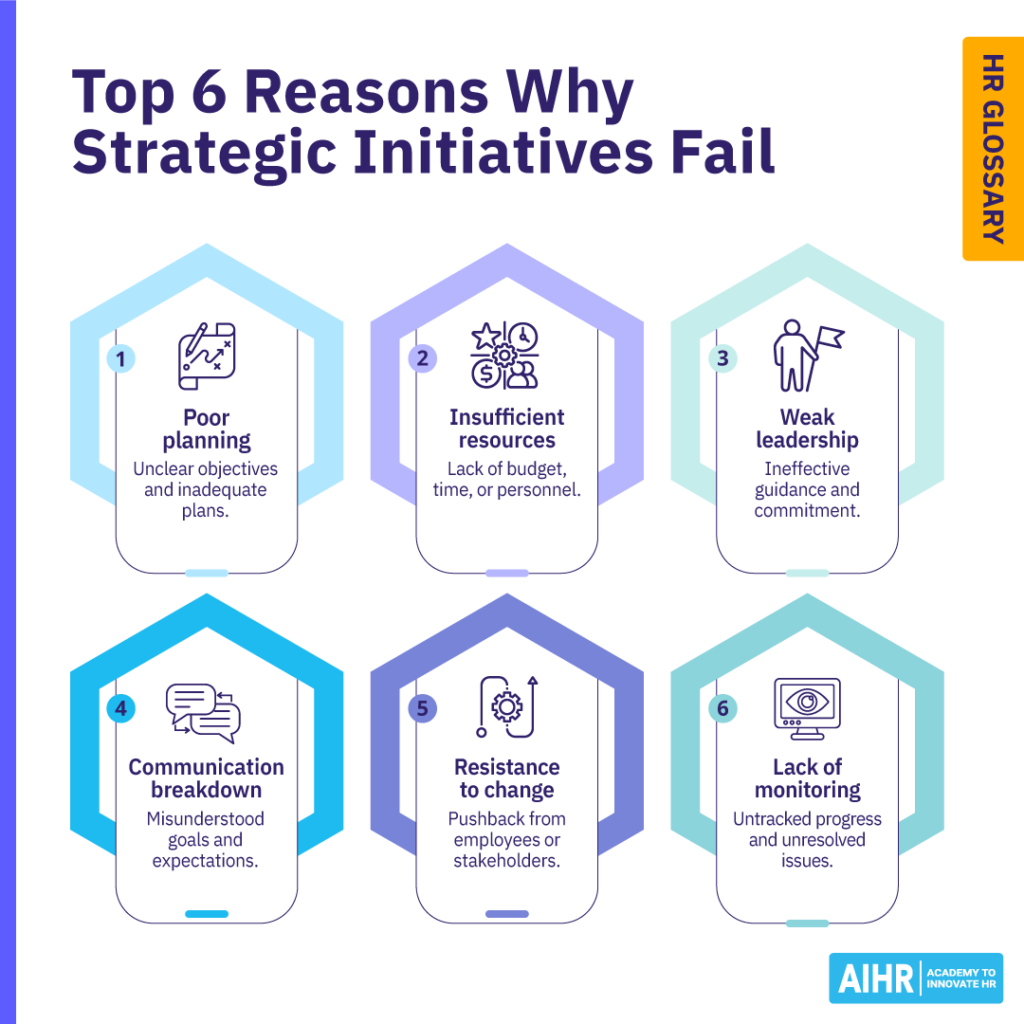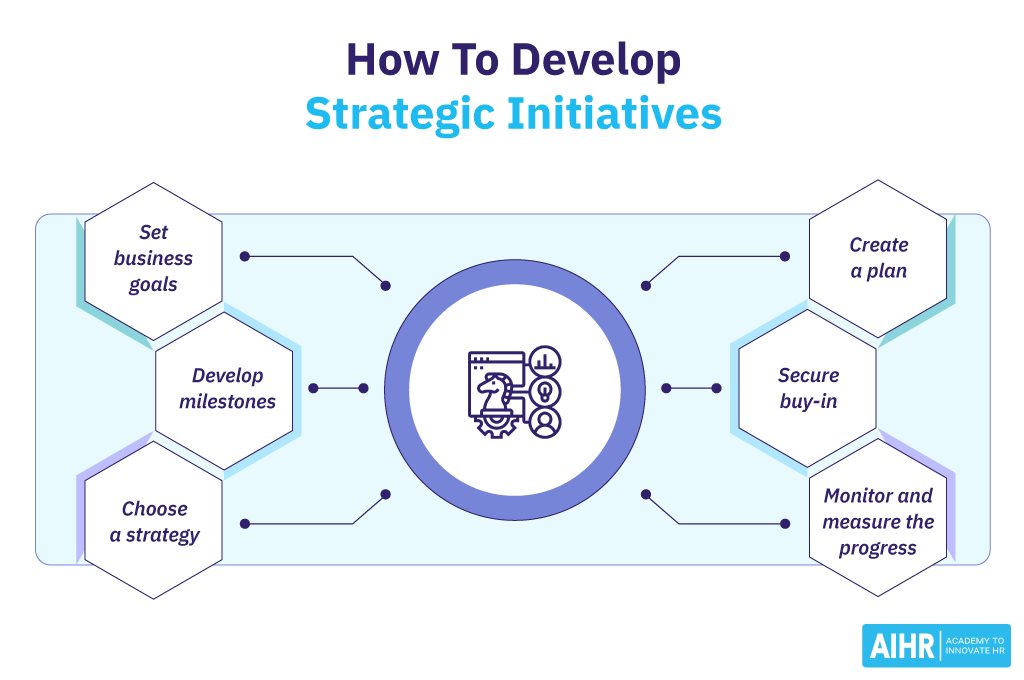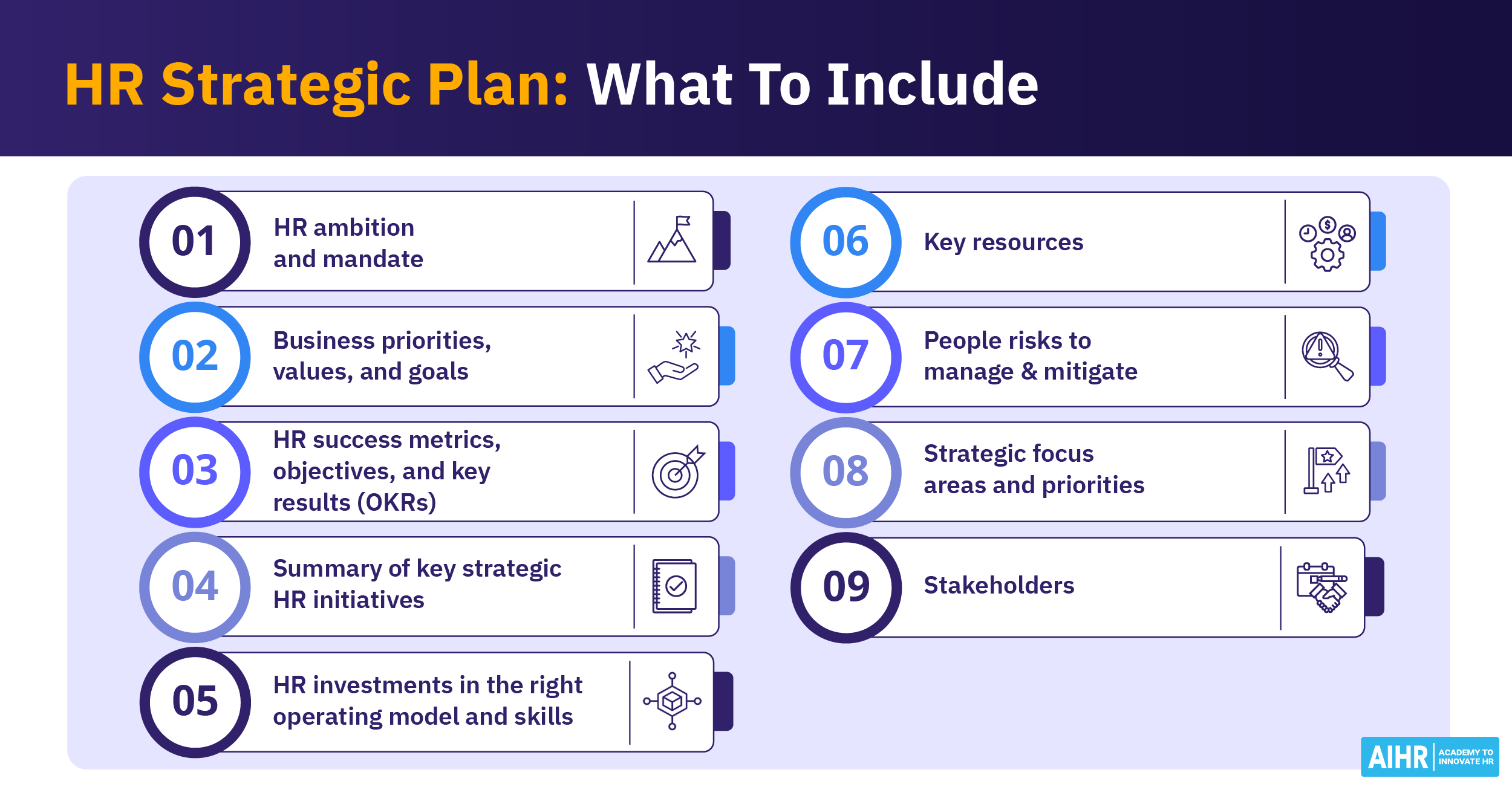Strategic Initiatives
What are strategic initiatives?
Strategic initiatives are action-oriented, measurable goals for achieving specific objectives and a long-term vision for improvement. The success of these initiatives depends on you deciding the goals you want to accomplish and understanding what the bottom line means. You can achieve desired outcomes by determining the maneuvers and actions required for success.
Typical strategic initiatives for organizational development include multiple projects. Organizations can also set several strategic initiatives to reach larger, more visionary goals.
Before you implement a strategic initiative in your organization, it is best to analyze the existing projects, determine how well they align with your goal, and eliminate tasks that will not impact them.
The key characteristics of a strategic initiative are:
- Well-defined goals
- Budgets
- Timelines and milestones
- Practical steps to achieve desired goals
- Measuring to gauge the progress.
What is the primary cause of failure for strategic initiatives?
The primary cause of failure for strategic initiatives is often inadequate execution. This can stem from several issues, such as:
- Poor planning: Lack of detailed plans or unclear objectives can lead to misalignment and ineffective execution.
- Insufficient resources: Not allocating enough budget, time, or personnel can hinder progress.
- Weak leadership: Inadequate leadership or lack of commitment can result in poor guidance and unclear direction.
- Communication breakdown: Failure to effectively communicate goals, expectations, and progress can lead to misunderstandings and misalignment.
- Resistance to change: Resistance from employees or stakeholders can impede the adoption of new processes or ideas.
- Lack of monitoring: Not tracking progress or measuring performance against goals can result in undetected issues and unaddressed challenges.
Addressing these issues early on can help increase the chances of successfully implementing strategic initiatives.

Strategic initiatives examples
Examples of strategic initiatives vary widely depending on the type of organization, as well as its market, functions, and people. Some examples include:
- Creating and implementing a social media campaign to boost brand awareness
- Developing the next generation of products through research efforts
- Acquiring or merging with a critical raw material supplier
- Pursuing low-cost production proactively as the top strategic priority
- Developing a strategy to decrease outsourcing
- Increasing the range of services and online products.
Take The HR Manager Certificate Program
HR is being called upon to make decisions more aligned with the organization’s strategy and goals than before. To be successful, you need to develop the skills and knowledge to drive results. The HR Manager Certificate Program helps you to:
- Design and implement an agile and project-based approach to your initiatives
- Learn how to align your HR strategies with the business goals
- Help you to drive change, build stakeholder relationships and get results.
Types of strategic initiatives
There are several kinds of strategic initiatives, undertakings, and actions. Some of the main categories include:
Corporate level
These strategies address the issues surrounding the market your organization competes in. For example, a software development company focusing on mobile OS may want to expand into mobile manufacturing. They can achieve this by partnering with another established manufacturer or developing their own hardware.
Functional levels
Functional levels refer to teams or individual departments within an organization. The strategic initiative at this level aims to enhance processes that contribute to corporate and business-level strategies.
Business level
These strategies involve action to succeed in your existing market. Organizations’ major issue at the business level is standing out amidst stiff competition. The strategy you set should increase brand awareness and generate more sales.
Corrective
Corrective initiatives address issues existing in your company, either to fix or eliminate them. The initiatives are usually short-term to allow teams to focus on larger, more complex strategic initiatives as soon as they remove issues that can hinder development.
Innovative or disruptive
Innovative initiatives aim to implement breakthrough ideas or products that influence other organizations. For example, an organization may advertise via online streaming instead of through traditional channels like television or radio.
Defensive
Defensive initiatives ensure your organization maintains its existing advantages and current market position. While their main purpose is to defend against competitors, it can involve setting new methods and strategies to boost development.
What is the difference between strategy and strategic initiatives?
Understanding the differences between strategy and strategic initiatives is key to effective planning and execution. Here’s a comparison:
Definition
High-level plan or approach to achieve long-term objectives and vision
Specific projects or actions to execute the strategy
Focus
Broad framework and overall direction
Concrete actions and projects supporting the strategy
Timeframe
Long-term, often spanning several years
Shorter-term, focused on specific milestones or steps
Purpose
Sets overall goals and direction
Implements and drives progress toward strategic goals
Planning
Involves broad analysis and setting priorities
Requires detailed planning and execution
6 steps to develop strategic initiatives
Developing strategic initiatives includes the following steps:
1. Set business goals
The goals you want to achieve will determine the strategic initiatives you develop. Determine the projects that will bring your organization closer to its vision and close the gaps hindering progress.
2. Develop milestones
These milestones are checkpoints to help you assess your progress. Completing one milestone brings you closer to realizing your goals, and you can optimize your strategies to complete all the milestones within a specified timeframe.
3. Choose a strategy
The strategy is the vehicle that moves you toward achieving your goals. It usually involves several ventures and will prepare your team’s activities framework for accomplishing these goals.

4. Create a plan
The plan defines the steps your team must take to accomplish business goals. Each plan should include a deadline, an assignee, and the entire project’s overall duration. After creating the plan, share it with the employees, executives, and other stakeholders to ensure everyone is aware of the different roles and actions needed.
5. Secure buy-in
Carrying out the plan requires support from the board members, other senior leaders, and key stakeholders. The best way to obtain this support is to present the plan’s benefits to all involved, including the financial and emotional benefits the organization will achieve.
6. Monitor and measure progress
After securing stakeholder buy-in and executing the plan, you must track its progress. Instruct superiors and managers to report regular summaries after completing milestones.
HR tip
Involve HR early when planning strategic initiatives to ensure you have the right talent and skills in place. This aids in smooth execution and boosts employee support.
FAQ
HR strategic initiatives are targeted actions and projects aimed at aligning the workforce with the organization’s long-term goals. These initiatives can include talent development, improving employee engagement, optimizing recruitment processes, and enhancing company culture to support overall business objectives.
The role of strategic initiatives is to translate an organization’s vision and goals into actionable projects that drive growth and competitive advantage.
Examples of strategic initiatives include launching a social media campaign to boost brand awareness, developing the next generation of products, and acquiring or merging with a critical raw material supplier.









